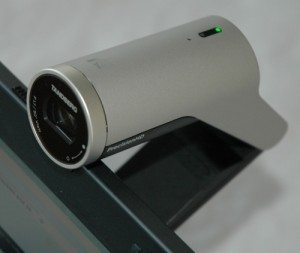 The Tandberg PrecisionHD USB Video Camera is a high quality camera that captures 30 frame per second full 720p (1280×720) video and mono audio. This would be the ideal camera for corporate desktop video conferencing, or for casual or mobile video podcasting. It’s large size and decent heft make it less appealing for the business traveler who is probably hauling a laptop with a passable VGA or better webcam built into their laptop already. Its relatively high cost and the current dicey support for HD video in non-business videoconferencing systems like Skype, Google Chat, or MSN, along with the higher bandwidth demands for HD conferencing, makes it a bit of a reach for the rest of us. Still, the future is always just a few months away, and if nothing else the Tandberg sets a pretty high bar for 720p HD video.
The Tandberg PrecisionHD USB Video Camera is a high quality camera that captures 30 frame per second full 720p (1280×720) video and mono audio. This would be the ideal camera for corporate desktop video conferencing, or for casual or mobile video podcasting. It’s large size and decent heft make it less appealing for the business traveler who is probably hauling a laptop with a passable VGA or better webcam built into their laptop already. Its relatively high cost and the current dicey support for HD video in non-business videoconferencing systems like Skype, Google Chat, or MSN, along with the higher bandwidth demands for HD conferencing, makes it a bit of a reach for the rest of us. Still, the future is always just a few months away, and if nothing else the Tandberg sets a pretty high bar for 720p HD video.
Before I get too far into the review, it’s helpful to check with the manufacturer’s marketing blurb on their product page to see how they’re pitching it. Quite accurately they position the PrecisionHD as providing “business-quality HD video communication” for “executives or mission critical employees”. There is nothing wrong with that, and I believe they’ve hit their target dead center.
Look & Feel
The device is constructed out of a metal top half, and plastic bottom half, and has a 39″ long USB cable attached. The hinged base is designed such that it can sit on a surface, or hook over the top of your monitor for more natural video chatting. The styling, the heft, even the quality of the included carrying pouch all convey a professional, business vibe.
You can see from the photo above that the PrecisionHD is not small. It’s hanging onto a 16″ laptop screen in the photo. You can also see the green indicator LED showing it’s powered up. The LED glows orange (or maybe it’s yellow?) when the camera is transmitting. The small dot on top is the omni-directional microphone.
The camera is auto-focus, but you can still twist the ring around the lens. If you do, you’ll engage the privacy shutter (shown above) which blocks the lens. When blocked, the camera transmits a nice “TandbergHD” information screen as the video image. You can use that image to check your firmware revision as well – more on that a bit later. It’s important to note that the microphone is NOT muted in that mode, just the video is disabled.
It’s a hand full for sure! It does pack up nicely into the semi-rigid carrying case supplied
Installation
The PrecisionHD is a UVC webcam. There is no software shipped with the PrecisionHD. Webcams following the UVC specifications are “driverless” – and compatible with a wide range of operating systems and software. It will work with Macs, Windows, and Linux – at least that’s the ones I threw at it. On all three you just plug it into a USB 2.0 port and you’ll get a video and an audio device, which you then select in whatever software you’re using. Like any other high bandwidth USB device, you may have difficulties if you use a hub loaded with other high-bandwidth devices, but that’s a USB limitation.
Camera Performance
I don’t have the kind of video evaluation equipment I’d need to do a fully accurate assessment. The best I can do is put the camera into some challenging situations and show you how it performs. I also don’t have access to either of the two supported HD video conferencing systems (both enterprise/business systems including Tanberg’s own Movi video conferencing system, and Microsoft Communicator) that directly support the device.
For the purpose of the review I was able to coax Skype into a “HD/High quality” 640×480 video chat, and I used native video capture software to view/record/frame grab from the camera in full 720p mode. Finally, I compared the microphone quality vs the inbuilt microphone of a laptop. Let’s look at each, beginning with a couple of shots from Skype:
These probably say more about Skype then about the PrecisionHD, but as you can see, even in 640×480 mode the camera delivers a sharp image. The setting is in a room with lots of windows, midday, on a sunny day. Lots of backlight, and yet the camera was able to adjust exposure well. The second screen capture is of a printed chart I held about 14″ away from the camera. You’ll see that chart again later. Even though this is not a software review, it does bring up the somewhat thorny problem of bandwidth use. Most home (or hotel) Internet connections are somewhat anemic on their upload speeds. Trying to push 720p video through anything less then a 1Mbit wide pipe isn’t going to be very pretty, no matter how good the camera is. Also, trying to process 720p video is going to require a fairly decent CPU. I was able to use an Acer Aspire One (Atom 1.6Ghz CPU) but it was running full out, and it was barely keeping up. Any Core 2 or better CPU should be fast enough, but if you’re trying to use something from more then three years back, it may not be able to handle it.
Example of video captured to AVI format: tandberg-precisionHD.avi (39mb download)
Auto Exposure, Auto Focus
For these next tests, I’m using the full 720p mode, capturing frames from the video stream. I positioned the camera in a challenging (but very typical) setting, with the subject (me) strongly back-lit with daylight through a window.
First, I am nearly out of frame. The camera focused and set exposure for the tree outside, as you would expect.
As I leaned in, the camera adjusted the exposure and focus compensate. The window is blown out, but the exposure is very good for the subject (me) and even with the blown out window there is no flare or bleed into the subject. This is NOT the kind of performance you get out of a $30 webcam, and shows off the good optics used in the PrecisionHD.
Finally, I held my hand up in front of the window, a little closer to the camera.
This forced the exposure up even more, completely blowing out the window. But again, look at the clear, sharp outline of my hand – no flare, no bleed, very clear all the way to the edge. The focus has pulled in more, such that the window/back wall is now clearly out of focus, but the focus depth is wide enough that my face is still in focus.
Hey, it’s that chart!
The last test was to hold up the chart while shooting 720p. Again, I was making it hard by having a bright backlight. This was from about 14″ back from the camera.
Since we resize the images here, I’ve provided a 1:1 crop of the center of the frame below:
You can see that the camera is sharp and even – good optics, good focus, good sensitivity.
What this translates into for someone doing a video conference is what I call the “document test”. It’s the point in the conference where someone holds a diagram or document up to the camera for the other person to see. Here’s a couple pages from the PrecisionHD, as viewed by the PrecisionHD, in 720p (resized down by nearly 1/3rd!)
Even shrunk down to liliputian-sized for the web, you can see that the text is completely readable. That’s pretty impressive performance right there. And yes, we are still in the same bad lighting situation here.
Can you hear me now?
The final test is just as subjective as those video tests. I recorded a clip of audio from the built-in laptop microphone located just above the keyboard on the right side, and from the PrecisionHD when it was positioned on top of the monitor in the typical “video conference” configuration. I sat in front of the laptop, and also moved around a bit, from all sides, and from about 10′ away. As you might expect if you’ve ever used your laptop mic, the built in mic picked up my voice and the whine of the fan and the click of keys and other machine noise, yielding a messy but understandable voice when directly in front. From the back, sides, or from any more then a couple feet away the results were pretty bad. Compared to tha the positioning of the microphone way above the fray on the PrecisionHD, along with what I can only assume is a higher quality microphone, resulted in a far clearer and more natural sounding voice when recorded from the PrecisionHD. It also picked up sound well from other directions, and from a fair distance away.
Conclusion
I’ve used a lot of cameras, a lot of webcams, and a few HD digital camcorders. The PrecisionHD has the video performance of a good quality point & shoot HD digital video camera, such as one of the Aiptek HD cameras. It’s got acceptable audio performance – not as good as a high quality microphone, but better then the tinny noisy mics on most laptops and low end webcams. It’s all wrapped up in a largish but lugable package. It also has one last surprise – you can update the firmware on the camera (from a machine running windows XP or Vista, at least) by downloading the latest version from the Tandberg web site.
INIU Portable Charger, Smallest 22.5W 10000mAh Power Bank, USB C in/Output Fast Charging 3-Output Mini Battery Pack Charger with Phone Holder for iPhone 16 15 14 13 12 Samsung S23 Google iPad Tablet
22% OffGerber Gear Suspension 12-in-1 EDC Multi-Plier Multitool with Pocket Knife, Needle Nose Pliers, Wire Cutters and More, Gifts for Men, Camping and Survival, Grey
5% OffProduct Information
| Price: | Check with Tandberg |
| Manufacturer: | Tandberg |
| Requirements: |
|
| Pros: |
|
| Cons: |
|

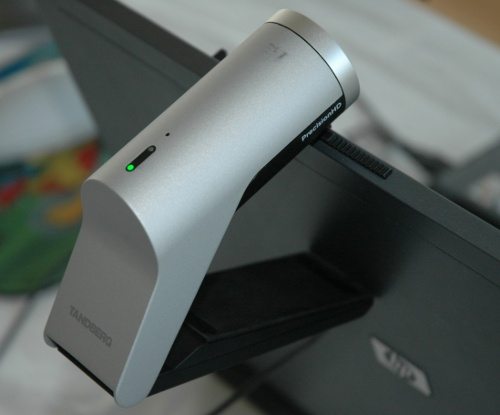
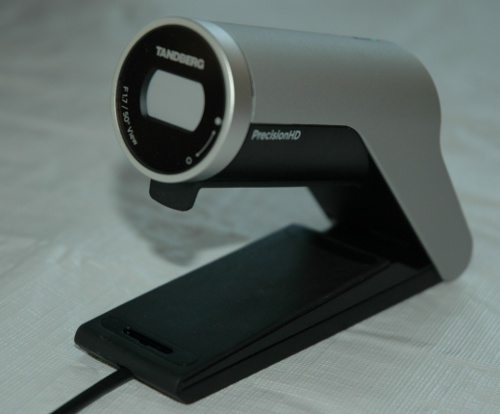
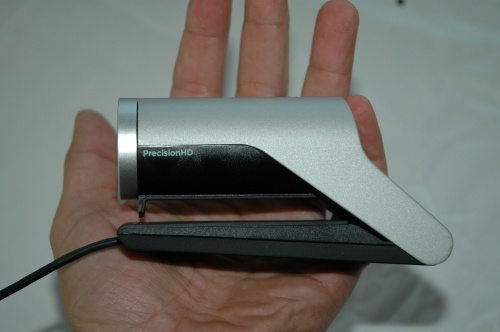
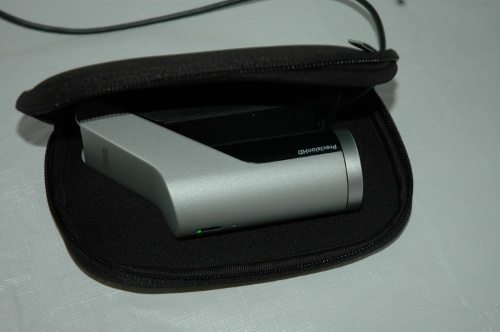

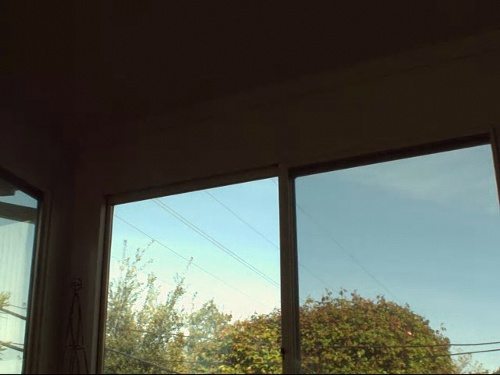


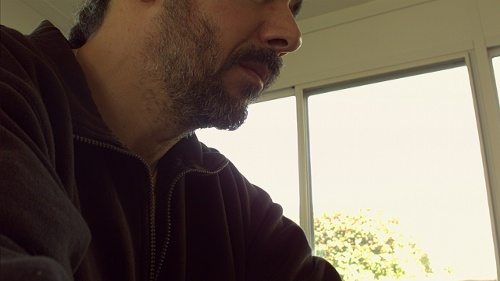

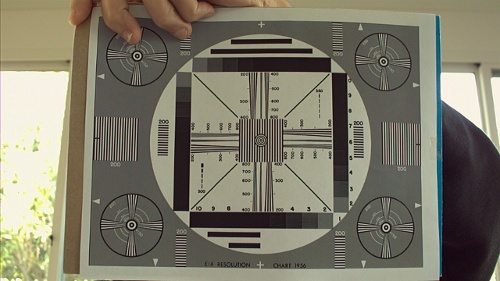
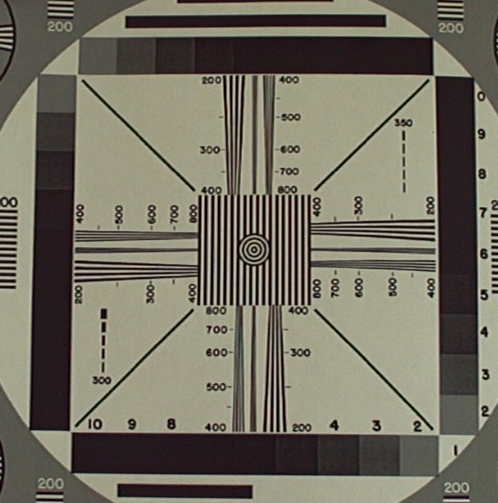
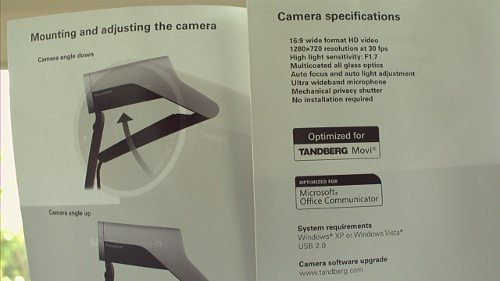
![[From INIU - the SAFE Fast Chage Pro] Experience the safest charging with over 38 million global users. At INIU, we use only the highest-grade materials, so we do have the confidence to provide an industry-leading 3-Year iNiu Care. [22.5W Speedy Char...](https://m.media-amazon.com/images/I/416nS4GRFtL._SL160_.jpg)

Gadgeteer Comment Policy - Please read before commenting
Can you compare the Logitech 9000 and Microsoft Lifecam HD? The Lifecam HD claims 720p /30 as well.
Hi Ryan,
I don’t have access to either of those. Perhaps we can do more reviews in the future.
the Microsoft lifecam HD is a great alternative and works with movi 3 (not 2) offering surprisingly almost as good video quality. The tandberg is superior but the lifecam is ALOT cheaper. Because of that, we use the tandberg camera in our dedicated movi videoconferencing rooms and individual users (on pcs, laptops etc) get either the lifecams or logitech 9000’s. Both rock but the logitech doesn’t do widescreen. If using the tandberg with movi, the only thing I will add is if your bandwidth has been limited (in the tandberg tms user options by your admin) to 512k or lower, then you start to miss out on the real benefits of the camera and may as well use anything. If you have at least 768k or 1mb or higher (and no bandwidth restrictions on your movi account) then HD video calls are absolutely awesome :-). Great camera, great review!
Cost ?
Windows 7 ?
USB 3.0 ?
Is your product sold in Tyler Texas? If so I would like to see one in person.
John
mi pregunta es si esta camara se puede utilizar con windows 7, y que hay que hacer para instalarla.
gracias
victoria
la cámara funciona bien con Windows 7, no instale / controladores necesarios
(google traducir esta respuesta, mi español es muy malo)
Works with WinXP or greater with no driver, Cost is $400 retail (it seems – although its not generally sold on the web I found one here for $375: http://store03.prostores.com/servlet/goldengatenetworks/the-321/Tandberg-Precision-HD-USB/Detail ), USB 2.0 (which works with USB 3.0, of course, but doesn’t even require the 12Mbit that USB 2.0 provides)
Thanks for a great review and providing the downloadable file.
I’ve been looking for a good USB camera, and this seems to be it.